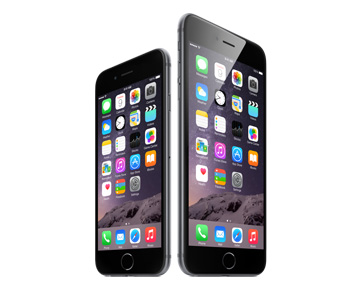 So the Apple hoopla is now over and, well, OK, it’s not over at all, but now that the new iPad has finally been unveiled the agonising pent up expectation has been dealt with and we can start to get on with our lives.
So the Apple hoopla is now over and, well, OK, it’s not over at all, but now that the new iPad has finally been unveiled the agonising pent up expectation has been dealt with and we can start to get on with our lives.
Looking at the specs, a few things of note occur. The HD display was, of course what this release was all about in the main, and it does sound like an amazing achievement. More resolution than a Full HD TV in a small 9.7in space will make for incredibly sharp, vibrant and clear images. Eventually it will Make Things Better, as web site designers, photographers and app designers realise they need to improve the visual quality of everything they do for fear of the new iPad display laying bare their flaws.
The next issue is the name. It appears to be officially called, ‘the new iPad’. Really? Facepalm.
The first iPad was called the iPad. The second iPad was called the iPad 2. So naturally the third is called… the new iPad. This sort of thing makes me a bit cross. Could we not just avoid confusion and called it the iPad 3? Would iPad HD have been too terrible? (Update: @ianbetteridge points out that it’s actually just called: iPad. Still, point stands.)
One tech journo wag on Twitter wrote, “I’ve given it some thought and I refuse to call it “New iPad”. No. I’d rather call it Glen, Tina or Gregg Jevins.” I’d be included to agree, though I’m leaning towards Mavis. Mavis it is then.
Another thing Mavis doesn’t have is the Senseg textured feel tech that some tech journos were getting very lathered up about yesterday. And because it’s not there we shall not speak of it again.
We also get a much improved 5-megapixel camera with 1080p recording, which is nice. This no doubt – will be putting further strain on network if pictures and videos are sent uncompressed.
Which brings us to LTE. Yesterday I said that the iPad, sorry, Mavis, might come out in two flavours – one regular 3G and one LTE enabled one for North America. I was wrong, amazingly. In fact, there’s one world LTE enabled Mavis, though outside of the US in terms of LTE, it’s as useful as a chocolate teapot.
This is because it’s only compatible with both the 700MHz bands used in the US by AT&T and Verizon. It also has LTE 2100, which is Big in Japan, and Nigeria. Great.
This means that when LTE networks become widespread in Europe, this iPad will simply not work with them. Europe is in the main going to use three main frequencies for LTE: – 800MHz, 1800MHz and 2.6GHz, so it will require a new chipset that supports those for European users to get LTE Mavis joy. It works the other way too – US users coming here will have to drop down to 3G. In the promotional video for Mavis, Bob Mansfield, senior vice president of hardware engineering says that it “works with more mobile bands than every mobile device ever.” Assuming this is true, it’s impressive but Apple needs to up the count even further for the next one. Not that it will be so terrible having to drop down to 3G, as the Mavis now supports HSPA+ and DC-HSPA (21Mbps and 42Mbps respectively and these are theoretical maximums; also known as ‘in your dreams’.
On an iPad, sorry Mavis, it’s less of an issue as wi-fi only tablets version tend to be popular, and that might be the safest route for now, and you can always tether to a mifi or smartphone.
The question then is if a newer LTE chipset will be ready by the time the iPhone 5 launches. If not, it will be more of an issue, as then Europe would effectively be stuck without LTE until the iPhone 6! I know, it barely bares thinking about.
(Picture is ‘borrowed’ from Nate Lanxon’s spiffing hands-on preview at Wired.co.uk.
—-
For more LTE terminal device discussions be sure to book your place at the LTE World Summit taking place on the 23-24 May 2012 CCIB, Barcelona, Spain.
 As you probably have noticed Apple, the company famous for making computers, among other things, did something remarkable yesterday. Yes, it killed off the ‘Classic’ iPod. You know the one with the click wheel and the 50 trillion songs on your pocket slogan. I know, I can hardly believe it either. This is a great shame of course, especially as I was thinking of upgrading my 2005 model as just last week my iTunes library exceeded its 60GB capacity for the first time meaning I can’t just hook it up and sync. Ah, cruel world.
As you probably have noticed Apple, the company famous for making computers, among other things, did something remarkable yesterday. Yes, it killed off the ‘Classic’ iPod. You know the one with the click wheel and the 50 trillion songs on your pocket slogan. I know, I can hardly believe it either. This is a great shame of course, especially as I was thinking of upgrading my 2005 model as just last week my iTunes library exceeded its 60GB capacity for the first time meaning I can’t just hook it up and sync. Ah, cruel world.





